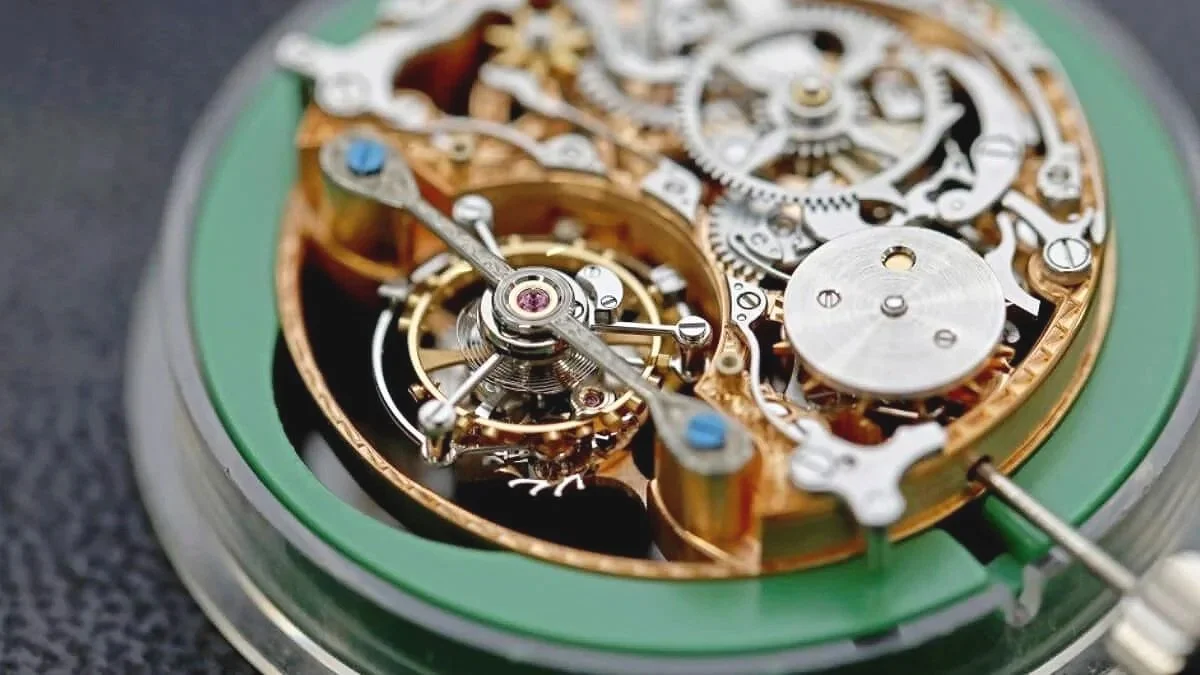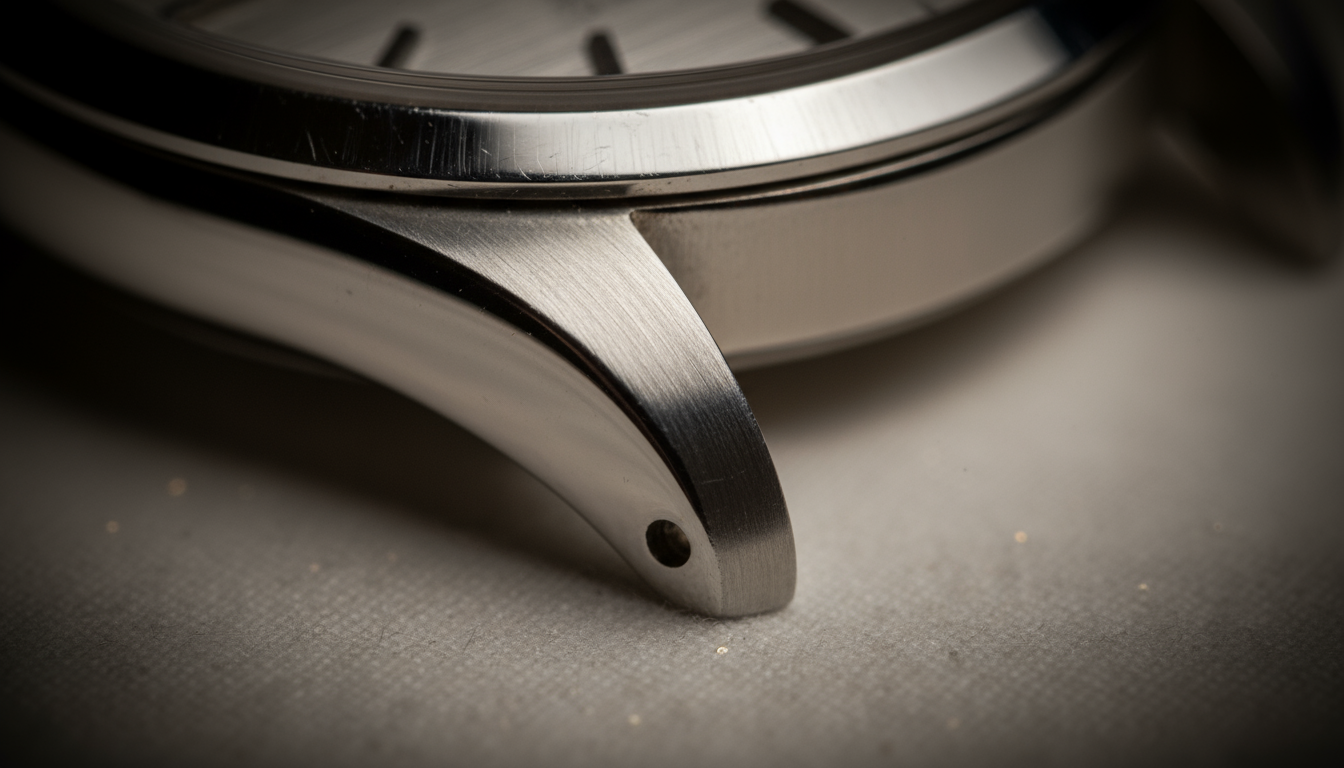The Collector's Guide to Choosing a Watch Repair Shop in Central Hong Kong
Ricky P
There’s a unique silence that follows the moment a cherished timepiece stops ticking. The once-constant, comforting sweep of the seconds hand comes to a halt, and in its place, a profound stillness. For the owner of a fine mechanical watch, this isn't merely a mechanical failure; it's a piece of personal history put on pause, a trusted companion suddenly muted. This moment, as every collector knows, is followed by a critical decision, one rooted entirely in trust.
In a global hub of luxury like Central, Hong Kong, the options for watch repair seem endless. Glimmering brand boutiques stand shoulder-to-shoulder with independent workshops, each promising expertise. Yet, for the discerning owner, this abundance of choice presents a daunting dilemma. The decision of who to entrust with your timepiece—be it a priceless family heirloom, a hard-won grail watch, or a vintage treasure—is fraught with uncertainty.
This guide is designed to provide you with a watch collector's framework for making that choice. We will move beyond slick marketing claims and brand prestige to reveal what truly defines a master watch repair shop. It’s about finding a trusted partner to take care of your watch comprehensively, who does more than merely repairing or removing scratches. It is about identifying a passionate and knowledgeable professional to ensure your watch's authentic character is preserved, original design details are revived, and its legacy is safeguarded for the future.
Why Brand Service Centre Is often not the best choice?
Let's address the most common assumption first: that an official Brand Service Centre (BSC) is the safest, and therefore best, choice for your watch. For a brand-new timepiece still under warranty, this is often true. A BSC is the designated expert for its own brand's modern, in-production watches, and it services them to a predictable, factory-set standard. However, for a vintage timepiece, a family heirloom, or any watch where originality is paramount, the "official" route can be a disastrous one. The belief that official equals best is often a false equivalence.
The primary mission of a BSC is standardisation. Their goal is to return a watch to its current factory specification, a philosophy that is often directly at odds with a collector's desire for preservation. This leads to the most feared outcome for any enthusiast: the mandatory replacement of original parts. That beautifully faded "ghost" bezel on your vintage Submariner, the creamy patina on the tritium dial of your father’s old GMT-Master, the gently worn hands that tell a story of decades of use—these are not flaws to a collector. They are the very soul of the watch. To a BSC, they are often just old parts to be discarded and replaced with sterile, modern service components, permanently erasing the watch's unique history and a significant portion of its market value.
This lack of control extends beyond parts. Owners frequently report a frustrating "one-size-fits-all" approach to service. A simple request for a movement overhaul can become bundled with a mandatory and costly case polish you never asked for, stripping away the gentle marks of a life well-lived. The choice to preserve your watch's character is often taken out of your hands.
The Single-Brand Veteran’s Limitations
Having decided against the rigid policies of a BSC, a next logical step is often to seek out an independent watchmaker who touts their long experience at a single prestigious brand. A "20-year Rolex veteran" or a "former Patek Philippe watchmaker" sounds like the perfect, safe alternative. While these specialists do possess deep knowledge, their expertise can be a double-edged sword.
This is the specialist's trap. Working for years within a single brand's highly structured service centre fosters a deep, yet profoundly narrow, field of expertise. These technicians become phenomenal experts on a very limited number of the brand's specific movements, or calibres, often from a single era. They can service a 5-year-old watch of that brand with incredible speed and precision.
But what happens when they encounter a 50-year-old calibre with long-obsolete parts? Or a delicate complication from a different brand in your collection? The single-brand veteran might simply refuse to take on the job, or worse, prematurely declare it unfixable.
A true collector rarely owns watches from only one brand. The omni-domain expert watchmaker, by contrast, is brand agnostic and operates in a different world. Their workshop is not a factory but a laboratory. Their daily work demands a vast, encyclopaedic knowledge spanning dozens of brands, hundreds of different calibres, and multiple eras of horological technology. The safest choice, therefore, isn't just someone who has left a big brand; it's someone whose philosophy and broad skillset align with the diverse needs of a true collector.
The Four Pillars of a World-Class watch repair Workshop
Elite watch repair is a holistic discipline. Any workshop that focuses only on the movement is providing an incomplete service. A true master workshop, the kind of establishment that earns the trust of seasoned collectors, is built upon four distinct pillars of excellence. When you're vetting a potential partner for your timepiece, measure them against these standards.
Movement Mastery
This is the foundational skill, but it goes far beyond a simple "clean, oil, and adjust." True movement mastery involves forensic diagnostics to pinpoint issues in complex, decades-old mechanisms. It requires an intimate understanding of the quirks and nuances of vintage calibres from a multitude of brands. Critically, it demands the skill and resourcefulness to service them, whether that means having a global network to source rare, new-old-stock parts or possessing the rare ability to fabricate a component by hand when it no longer exists anywhere else.
Aesthetic Craftsmanship
The character of a watch is expressed in its physical form. A world-class workshop understands that the case, bracelet, and dial are not just components; they are integral to the watch's identity. This pillar is defined by the art of the polish. A novice can take a watch to a polishing wheel and round its sharp, elegant edges into a dull, melted shape. A master uses traditional hand-lapping techniques to painstakingly restore the original factory finishes—the perfect razor-sharp line of a chamfer, the satin gleam of a brushed surface, the mirror-like shine of a Calatrava case. This is best exemplified by the restoration of a "stretched" vintage Rolex bracelet. Where a brand service centre will only offer a costly replacement—or worse, take your original bracelet away in some instances—a true artisan can meticulously rebuild it, preserving the original clasp and links and, in doing so, preserving the watch’s integrity and legacy.
Technical Mastery
This is the unseen work, the highly technical skills that can save a watch that others would deem a lost cause. It’s the micro-engineering that brings a timepiece back from the brink. This includes advanced techniques like laser welding to invisibly repair a broken or deeply dented case lug, expertly re-threading a stripped crown tube to restore water resistance, or custom-cutting a uniquely shaped crystal for a vintage piece when replacements are no longer available. These are the skills that separate a simple repair shop from a true restoration atelier.
Sourcing & Authenticity
No workshop is an island. Its quality is magnified by its connections. An elite specialist has a trusted global network of suppliers, fellow collectors, and dealers. This network is crucial for sourcing the period-correct, genuine parts essential for any high-value restoration. Furthermore, when a part is truly unobtainable, a top-tier workshop distinguishes itself with the capability to manufacture components from scratch, ensuring no timepiece is a lost cause. This dedication to sourcing the right components—or creating them when necessary—is a critical part of reviving authenticity and maintaining your watch’s provenance and value.
The finest workshops offer a seamless synthesis of these four pillars under one roof. But more than that, they possess an intangible quality: a relentless drive for innovation. A truly elite workshop is not static; it is constantly evolving, figuring out new techniques and inventing solutions with the singular aim of solving any client's needs, no matter how complex. This commitment to problem-solving, not just service, is what separates a good workshop from a great one. It's a matter of absolute quality control, ensuring that every aspect of the restoration meets a single, elite standard.
The Artisan in Focus: A Case Study in Innovation
Classic Watch Repair is the perfect embodiment of these four pillars, and its soul is founder Michael Young. He is not from a traditional watchmaking background, but is a passionate engineer and a seasoned collector. The impetus for founding Classic Watch Repair came from his own frustration with his vintage Rolex collection; at the time, nowhere could provide the preservation-focused service he sought, perfectly illustrating the "service gap" discussed earlier.
Applying his engineer's mindset to solve "impossible" problems, he developed the world-renowned technique for restoring "stretched" vintage watch bracelets. This signature service is a testament to solving an industry problem through sheer innovation. Through a meticulous process of disassembling each link, laser-welding the inner walls, and careful reassembly, he restores a loose, sagging bracelet to its original factory tightness and feel, all while preserving every single original part. This service not only solved a technical challenge but, in doing so, has saved the authentic character of countless treasured timepieces.
The Collector's Choice: A Philosophy of Preservation
Ultimately, the choice comes down to a shared philosophy. A great watch repair shop doesn't just see itemized repair jobs; it sees a story. It operates with a collector's mindset.
This "by collectors, for collectors" philosophy is rooted in a deep, shared understanding that a faded bezel or an aged dial isn't a defect to be erased. Patina is the narrative of the watch's life. The goal, therefore, must always be preservation over replacement. It's about meticulously reviving the authenticity of every component while safeguarding the legacy contained within the whole. A workshop that embodies this ethos connects its services to the Four Pillars, offering integrated excellence in movement service, legendary case and band restoration, and vintage parts sourcing, providing a complete solution for the discerning owner.
This philosophy also fosters a true partnership. A master watchmaker doesn't just take your watch and disappear for months. They take you on the journey of its restoration, offering transparent diagnostics, clear communication, and collaborative decision-making every step of the way. You remain in control of your property and its history.
A mechanical movement is a symphony of hundreds of parts. Ensuring its precision for generations to come requires a master's hand. Explore our Meticulous Movement Service...
The character of your watch is in its form. From a factory-perfect finish to the tight links of a vintage bracelet, true restoration is an art. Witness the transformation in our Case & Band Restoration Gallery...
Beyond Repair, Towards Custodianship
Choosing a watch repair shop is more than a simple consumer decision. It is an act of selecting a custodian for a piece of your history. The analysis is clear: the right choice is not dictated by a famous brand name, but by a partner who demonstrates passion and knowledge for timepieces, a holistic mastery of the craft, a transparent process, and an unwavering philosophy of preservation.
For the true enthusiast, the artisan's touch is not a luxury; it is a necessity. It is the only way to ensure the story of your timepiece continues to be told for generations to come, fulfilling a simple yet powerful mission: Reviving Authenticity. Safeguarding Legacy.
Your timepiece deserves a custodian who understands its value, both mechanical and sentimental. We invite you to begin a conversation with our specialists.


